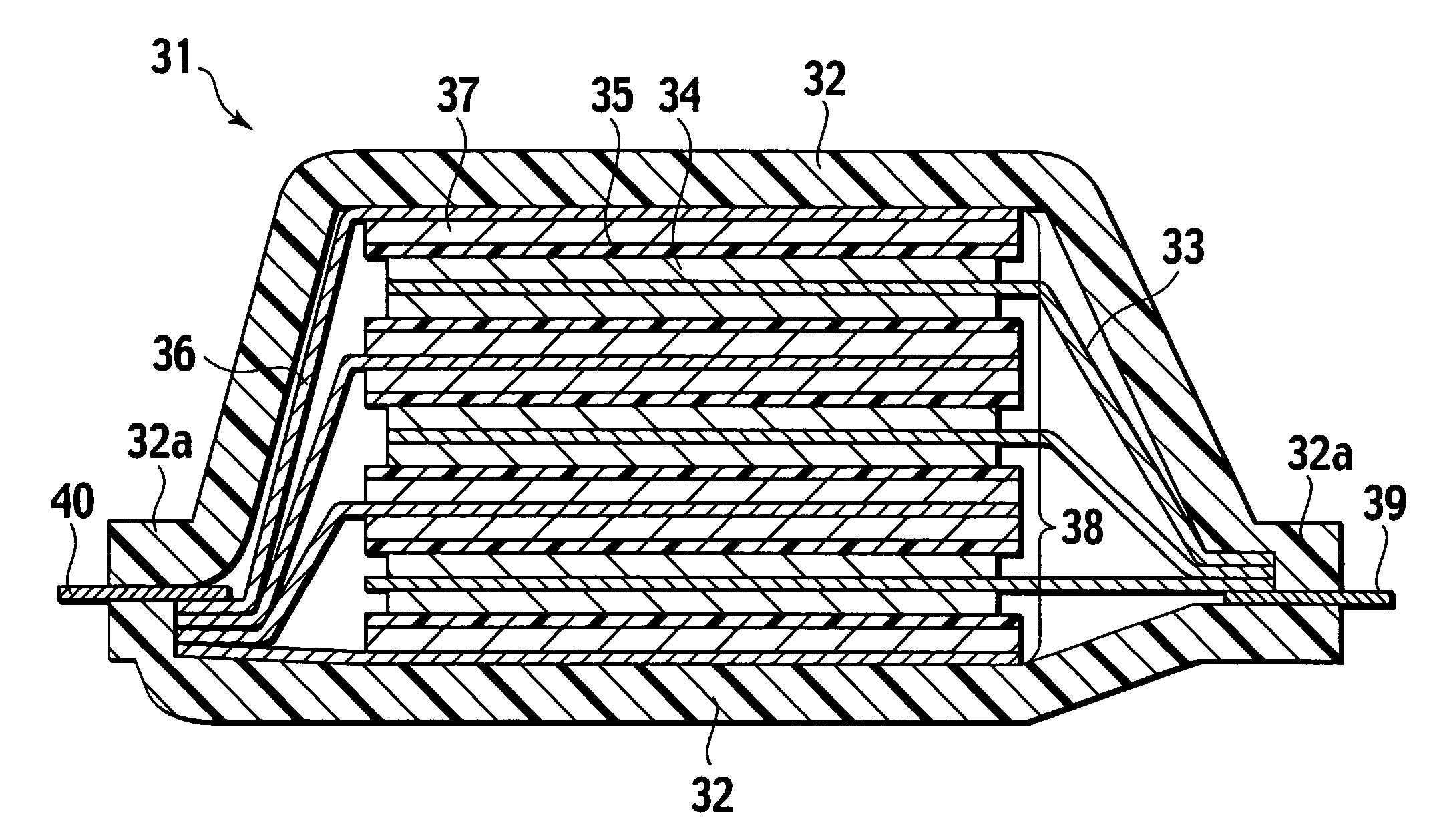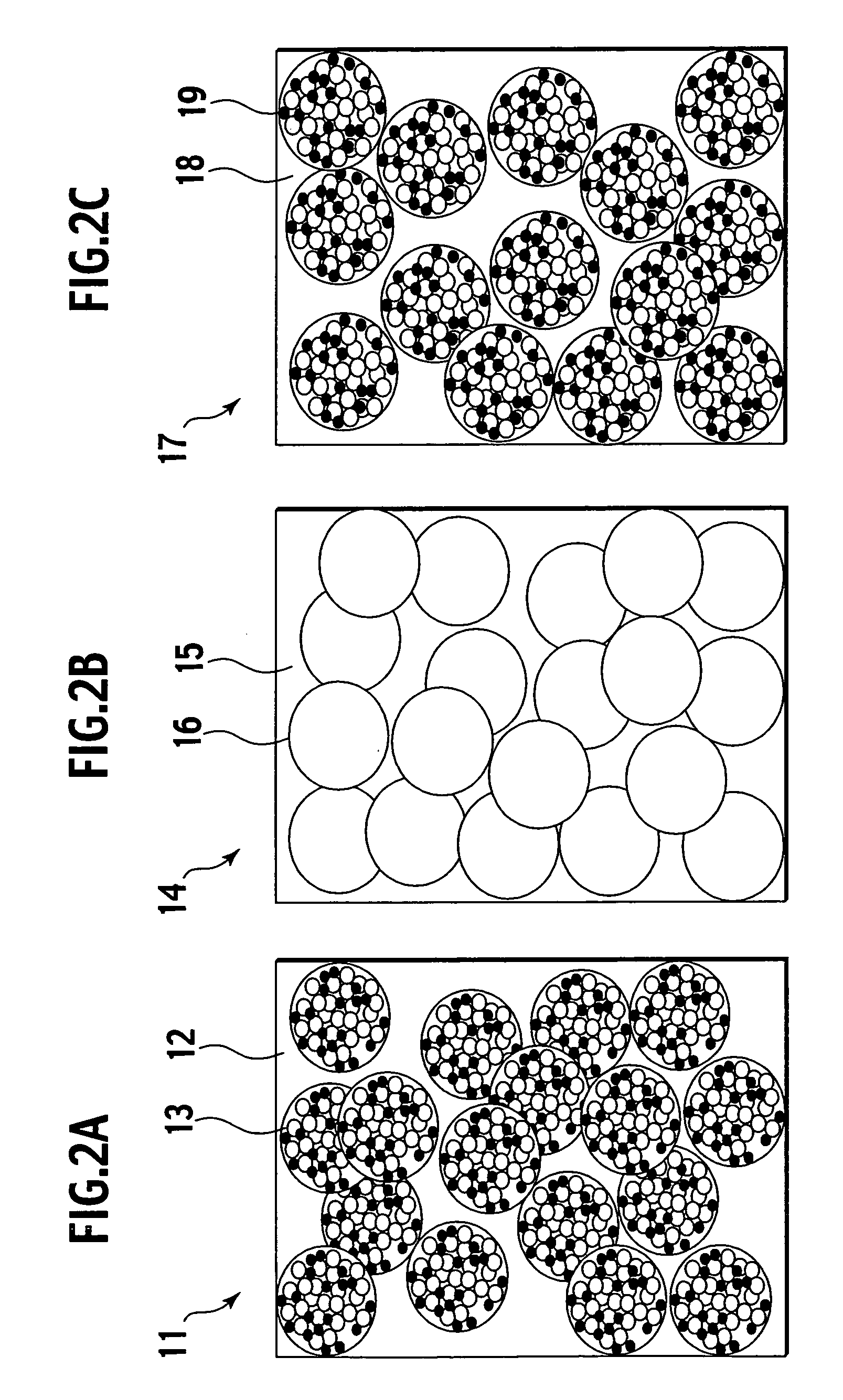Method of manufacturing solid electrolyte battery
- Summary
- Abstract
- Description
- Claims
- Application Information
AI Technical Summary
Benefits of technology
Problems solved by technology
Method used
Image
Examples
example 1
[0293] (1) Preparation of Positive Electrode Ink (Step (1) of the First Embodiment)
[0294] A positive electrode active material containing 7 g of spinel manganese with a mean particle diameter of 1 μm, conductive material containing 2 g of carbon powder (Denka Black manufactured by DENKI KAGAKU KOGYO KABUSHIKI KAISYA) with a mean particle diameter of 30 nm, polymer electrolyte containing 4 g of polyethylene oxide with a molecular weight of approximately 2000, electrolyte salt containing 2 g of LiBETI and a solvent containing 20 g of acetonitrile were weighed and mixed using a mixer, thereby obtaining positive electrode ink. A viscosity of the resulting positive electrode ink was 5000 cP.
[0295] (2) Preparation of Negative Electrode Ink (Step (2) of the First Embodiment)
[0296] A negative electrode active material containing 9 g of graphite with a mean particle diameter of 1 μm, polymer electrolyte containing 4 g of polyethylene oxide with a molecular weight of approximately 2000, el...
example 2
[0319] (1) Preparation of Positive Electrode Ink (Steps (1)+(3) of the Second Embodiment)
[0320] A positive electrode active material containing 7 g of spinel manganese with a mean particle diameter of 1 μm, conductive material containing 2 g of Denka Black with a mean particle diameter of 30 nm, polymer electrolyte containing 4 g of polyethylene oxide with a molecular weight of approximately 2000, electrolyte salt containing 2 g of LiBETI and a solvent containing 85 g of acetonitrile were weighed and mixed using a mixer, thereby preparing a mixture slurry. A viscosity of the resulting mixture slurry was 100 cP.
[0321] The mixture slurry prepared as described above was granulated into particles with a mean diameter of 10 μm using a spray drier. The prepared positive electrode polymer particles were dispersed in carbon tetrachloride, thereby preparing positive electrode ink. A viscosity of the resulting positive electrode particle ink was 5000 cP.
[0322] (2) Preparation of Negative E...
PUM
 Login to View More
Login to View More Abstract
Description
Claims
Application Information
 Login to View More
Login to View More - R&D
- Intellectual Property
- Life Sciences
- Materials
- Tech Scout
- Unparalleled Data Quality
- Higher Quality Content
- 60% Fewer Hallucinations
Browse by: Latest US Patents, China's latest patents, Technical Efficacy Thesaurus, Application Domain, Technology Topic, Popular Technical Reports.
© 2025 PatSnap. All rights reserved.Legal|Privacy policy|Modern Slavery Act Transparency Statement|Sitemap|About US| Contact US: help@patsnap.com



